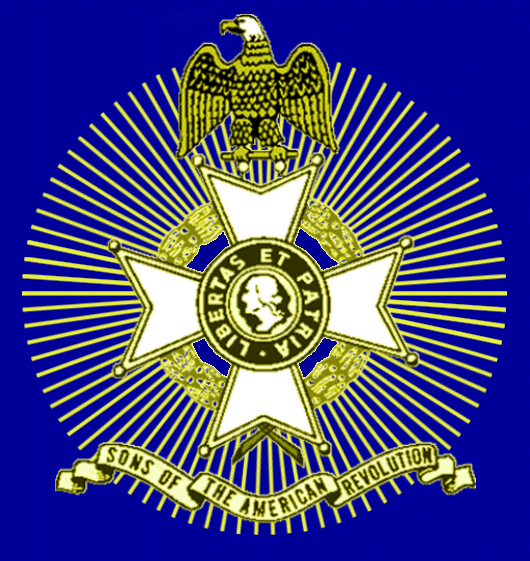Daniel Chapman in the American Revolution
by John D. Sinks
Daniel Chapman was born in Westchester County, New York on July 25th, 1756. Daniel Chapman testified in his pension application that he served four tours of duty and as a guide or scout. His first tour of duty was quite early in the war, the spring of 1775, and from events he described in detail we know that he also served as late in the war as December of 1781. Service in Westchester County was unusually hazardous. The county was between the lines of the two armies for much of the American Revolution. Loyalties in the county were deeply divided and the war in Westchester County became a very bitter civil war. Local residents guiding patrols could suddenly come up against superior forces. Militia who were captured were often ill-treated by Tories who knew them personally.
Daniel Chapman himself faced grave personal danger one day late in the war. The day was December 2nd 1781, almost two months after the siege of Yorktown. Daniel Chapman in a company of about 30 militia serving under Capt. Richard Sackett and Lt. William Mosier. The company had established an outpost at Merritt's Corner to guard against British movement. Sackett was being shaved at Josiah Fowler's tavern when a company of about 45 Tory horsemen suddenly appeared and captured the captain and his brother. Mosier and the company saw the Tories and started to flee through the fields. Normally under these circumstances the faster horsemen would catch militia and cut many down with their heavy cavalry sabres. Militia who survived and were captured could expect to be imprisoned on the hulk of a ship in New York harbor, an often fatal outcome.
By the time Mosier and his men reached the top of a hill on the Brundage Farm, the Tories were almost upon them. Mosier formed his men into a square or circle. He ordered them to fix bayonets and not to fire until ordered. The Tories attempted to ride through the patriot band, but Mosier's men jabbed at the horses with their bayonets. The horses reared up and the Tories were thrown into disorder. The Tories tried a second time with similar results. A Tory named Strang fired is pistol and was shot dead on an order from Mosier. Colonel John Holmes, a hated turncoat, aimed his pistol at Mosier, but did not fire when he realized that doing so would be certain death to him. Another Tory, Capt. Samuel Kipp baited John Patterson, one of several black soldiers in Mosier's militia, by calling him a “black rascal.” Patterson jumped of the formation, jabbed his bayonet into Kipp’s hip, dodged a sword blow, and then jumped back into the formation. After about an hour, the Tories gave up and rode away.
The tactics used in this engagement were noted by higher command. By the time of the Napoleonic wars, use of the hollow square became a standard tactic by infantry against cavalry.
After the Revolution Daniel Chapman removed to Peru, Clinton Co., New York and later to Indiana and finally Johnson Co., Ill. He raised his sons to be patriots. Two of them, Samuel and Solomon, served in the War of 1812 in the 23rd U.S. Infantry. A third son, George Washington Chapman, served in the Civil War in the Illinois cavalry, lying that he was only 45 years old in order to be accepted into service.
Memorial Day was originally established to remember and recognize those who had given their life for their country. Now we also remember and recognize those who placed their life at risk for their country. Daniel Chapman was such a man. He survived the American Revolution by almost 60 years, but during the conflict his life hung in the balance. It is especially fitting that on this day we remember his sacrifice and service by placing a brass marker at his grave.*
* The following descendants of Daniel Chapman unveiled the marker:
Gertrude (Baker) Becker
Homer Baker
Helen (Baker) Burnett
Glenda Sue (Baker) Bench
Louise (Baker) Pence
Margaret (Baker) Cameron
Evelyn (Whiteside) Evers
Frances L. (Whiteside) Schroeder
John D. Sinks
Bibliography
In addition to the military service and pension files of the Chapman family in the National Archives, the following works have been quite valuable in filling in detail about events clearly described by Daniel Chapman in his pension application:
William S. Hadaway (ed.). The McDonald Papers (Part 1 & 2). Westchester County Historical Society, White Plains, N.Y. (1926-1927).
Otto Hufeland. Westchester County during the American Revolution: 1775-1783. Harbor Hill Books, Harrison, N.Y. (1974). [Reprinted from the 1926 edition published by the Westchester County Historical Society with new forward].
![]()
Fairfax Resolves Chapter Honors Sgt. Daniel Chapman
The Fairfax Resolves Chapter placed a bronze marker at the grave of Sgt. Daniel Chapman in Vienna, Johnson Co., Illinois on May 26th, 2003 as part of Memorial Day celebrations. Chapman served in the Revolution in the Westchester Co., New York militia and levies. The Daniel Chapman Chapter D.A.R. provided able assistance. Special thanks go to Juanita Whiteside, NSDAR Director for Division VII in Illinois, and NSDAR former Vice President General Rose Mary Orr.

Daniel Chapman Grave Marker
Click to Enlarge

